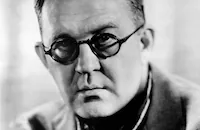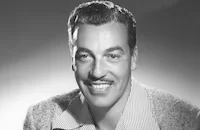Donovan's Reef
Brief Synopsis
Cast & Crew
John Ford
John Wayne
Lee Marvin
Jack Warden
Elizabeth Allan
Dick Foran
Film Details
Technical Specs

Synopsis
Just off the South Sea island of Haleakoloha, World War II hero "Boats" Gilhooley jumps ship and swims ashore in search of his Navy buddy, "Guns" Donovan. Each year on their birthdays (December 7), the two men engage in a barroom brawl; this year's ritual takes place in Donovan's Reef, a tavern owned by Guns. The men nearly destroy the place before the fight is halted by island physician Doc Dedham, the third member of the naval trio. Meanwhile, Dedham's daughter, Amelia, is on her way to Haleakoloha from Boston, hoping to prevent her father, whom she has never seen, from inheriting a huge family fortune. When the three friends learn of the visit, they arrange for Guns to temporarily adopt the doctor's three halfcaste children, assuming that Amelia would never accept them as brothers and sisters, even though their late mother was an island princess. Their fears about Amelia are well-founded; although she likes the children, her relationship with Guns and Gilhooley is stormy. Island governor André de Lage attempts to court Amelia--largely for her money--but he is rebuffed. When she defeats Guns in a swimming race after a water-skiing expedition, she begins to enjoy his company. Then she learns that the children belong to her father, blames Guns for depriving them of their natural home, and walks out on him. Reconciliation attempts are interrupted when Guns and Gilhooley take on a barroom full of Australian sailors in a huge free-for-all. In the end, Amelia decides to marry Guns and remain on Haleakoloha; Gilhooley finally agrees to marry his longtime girl friend, Fleur; and a business transaction between the two brawling buddies turns the tavern into Gilhooley's Reef.

Director

John Ford
Cast

John Wayne

Lee Marvin

Jack Warden
Elizabeth Allan

Dick Foran

Cesar Romero

Dorothy Lamour
Jacqueline Malouf

Mike Mazurki

Marcel Dalio
Jon Fong
Cherylene Lee
Tim Stafford
Carmen Estrabeau
Yvonne Peattie
Frank Baker
Patrick Wayne

Edgar Buchanan
Charles Seel
Chuck Roberson

Mae Marsh
Major Sam Harris
Cliff Lyons
Crew
Jack Barry
Frank Beetson Jr.
Frank Beetson Sr.
Edmund Beloin
Naomi Cavin
William Clothier
Dale Coleman
Al Cuesta
Virginia Darcy
Farciot Edouart
John Ford
John Ford
Ed Garvin
James Edward Grant
Hugo Grenzbach
Grace Harris
Jack Hayes
Edith Head
Eddie Imazu
Paul K. Lerpae
Otho Lovering
Brick Marquard
James A. Michener
Cyril Mockridge
Gary Morris
Tom Morris
Frank Nugent
Ed O'fearna
Earl Olin
Wally Oliver
Web Overlander
Bud Parman
Hal Pereira
William Reynolds
Robert Rhea
G. E. Richardson
Don Robb
Dominic Seminerio
Leo Shuken
Darrell Silvera
Wingate Smith
Chet Stafford
Meta Stern
Shirlee Strahm
Irvin Talbot
Marvin Weldon
Frank Westmore

Film Details
Technical Specs

Articles
Donovan's Reef
In assembling his cast and crew for Donovan's Reef, Ford called on old friends and frequent collaborators. Among them were his most frequent star John Wayne, personal friend Dorothy Lamour (whom he called "Toujy," short for "Toujours L'Amour"); cinematographer William Clothier, who shot the great Cavalry epic Fort Apache (1948) and other Ford pictures; character actor John Qualen; and former silent star Mae Marsh, who often turned up in uncredited bits in Ford's movies. He also gave the second male lead to his new pal Lee Marvin, who played the villainous Liberty Valance and took the role in Donovan's Reef without ever seeing a script, succumbing instead to Ford's pitch: "Don't you want your kids to be brown as berries? Don't you want to spend eight weeks in Hawaii this summer? Then do the picture."
In recent years, however, some film analysts have re-evaluated Donovan's Reef as more than merely a throwaway vacation project, finding in it a bittersweet elegy for days gone by. In both the fictional world of the film and in the advancing twilight of Ford's life and career, it reveals a sharp topical edge in its exploration of racism. The story concerns the efforts of two boozing, brawling former war buddies (Wayne and Marvin) to conceal the truth about the relationship between their good friend, an ex-military doctor, and an island princess when the doctor's straight-laced New England-bred daughter arrives on the island. Wayne's character, owner of the waterfront dive that gives the movie its title, imparts to the young woman a sense of tolerance and adjustment to the easy island ways, falling in love with her in the process.
The production was not an easy-going frolic by any means. Ford, never the easiest person to deal with, even in the best circumstances, had his share of temper tantrums. In one particularly nasty outburst, he berated Lamour mercilessly in front of the entire company for complimenting Marvin after a take; she stormed off the set and would not return until the director apologized in person. This was neither the first nor last such episode that occurred on location.
Part of Ford's edginess may be attributable to having to finance much of the production himself after learning, less than 24 hours after arriving in Hawaii, that Paramount had pulled the backing he expected, although they still agreed to distribute the picture. Beyond that, he also spent more than $70,000 getting his yacht ready to use in the location shoot. Most of that expense represented a net loss, although not regretted by Ford, who was pleased to give his beloved vessel one last blaze of glory before age and the cost-prohibitive upkeep made it necessary for him to retire the Araner.
Ford's irritable nature may have also stemmed from his awareness that he was no longer at the top of his game, at least in John Wayne's estimation. Ford was having particular trouble with his eyesight, so Wayne deputized himself to watch the rushes every day to make sure everything was all right. The stress of the working environment caused Wayne to snap at Ford, something he had rarely done in their many years of working together (it was frequently the other way around). Wayne was also feeling the pressure of being miscast (in his opinion) in the rowdy role of Donovan, especially since he was paired with a leading lady more than 20 years his junior. He also suffered an injury in an on-screen fight with Marvin when he crashed through a table and fell to the floor (a shot Ford kept in the movie).
It all ended amicably enough, but it was definitely the end of Ford and Wayne's collaboration. After 35 years and more than 20 pictures, Ford and Wayne, one of the most iconic teams in the history of motion pictures, never worked together again. Ford completed only two more feature films, Cheyenne Autumn (1964) and Seven Women (1966) and was later replaced after falling ill during the production of Young Cassidy in 1965. He spent his final years working on two documentaries, Vietnam! Vietnam! (1971) and Chesty: A Tribute to a Legend (1976, released after Ford's death), before succumbing to cancer at the age of 78 in 1973.
Director/Producer: John Ford
Screenplay: James Edward Grant, Frank S. Nugent, story by Edmund Beloin (and James Michener, uncredited)
Cinematography: William H. Clothier
Editing: Otho Lovering
Original Music: Cyril Mockridge
Art Direction: Eddie Imazu, Hal Pereira
Cast: John Wayne (Donovan), Lee Marvin (Gilhooley), Elizabeth Allen (Amelia), Jack Warden (Dr. William Dedham), Cesar Romero (Marquis de Lage), Dorothy Lamour (Miss Lafleur).
C-109m. Letterboxed. Closed captioning.
by Rob Nixon

Donovan's Reef
Quotes
Trivia
This is the last movie that 'Ford, John' and 'Wayne, John' worked on together.
Ameilia asks the captain "to charter the Ariner." That was the real name of 'Ford, John' 's yacht.
The yacht used in the film is 'Ford, John' 's yacht "The Araner."
In a fight with Lee Marvin, 'John Wayne' underestimated an uppercut. He crashed through a table and felt down. Director 'John Ford' decided to put the scene into the movie.
Notes
Copyright length: 112 min. Location scenes filmed in Kauai, Hawaii.

Miscellaneous Notes
Released in United States February 10, 1990
Released in United States Summer July 1963
Shown at American Museum of Moving Images, New York City February 10, 1990.
Released in United States February 10, 1990 (Shown at American Museum of Moving Images, New York City February 10, 1990.)
Released in United States Summer July 1963














